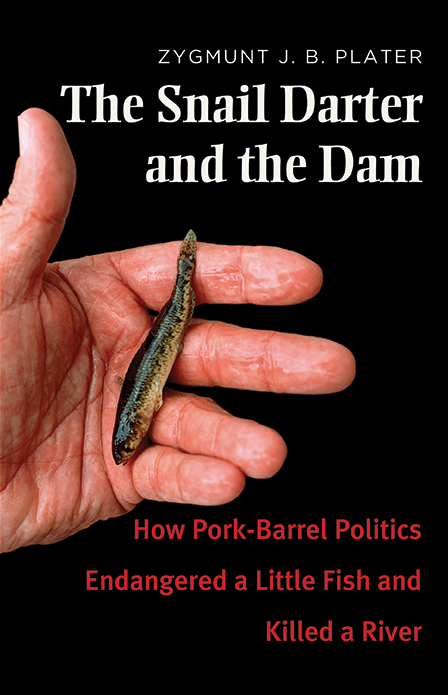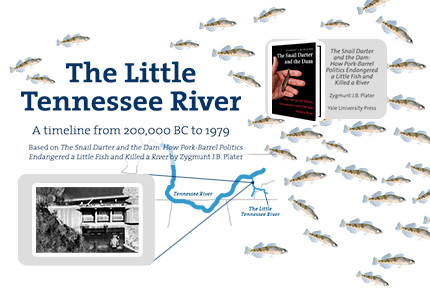40 Years of Endangered Species Act, 39 Years of Attacks on the Snail Darter
Today is the 40th anniversary of the Endangered Species Act (ESA) of 1973. The ESA attempts to protect species from extinction as a “consequence of economic growth and development untempered by adequate concern and conservation.” The ESA uses quite broad language, protecting “any species”. There was some question as to the breadth of cases in which the Act could be invoked. A year later, the snail darter was discovered and thrown, along with the yet untested ESA, into the battle to save the Little Tennessee River from the Tellico Dam. Law professor Zygmunt Plater tells the story of the case in The Snail Darter and the Dam, sharing from his first-person perspective inside the case the emotional story of the tiny fish that almost saved the family farms of the Little Tennessee River Valley.

Despite the fact that the dam would do much damage to the region’s aquatic and human occupants while providing no economic benefits, the takeaway of the case for the press and ESA opponents was that the Act was a dangerous, extremist weapon wielded by environmental hippies who would block important economic development for insignificant species. These opponents have used the snail darter case to fuel misperception of the ESA ever since it was first brought up in a court room. The snail darter continues today as a misbegotten target for antiregulatory attacks on the ESA and other regulatory statutes; Sen. Rand Paul and the Tea Party have recently submitted bills to eviscerate the Act’s protections of wildlife—S.B. 1731 and H. 3533—and in his comments against the Act Sen. Paul uses the snail darter as an object of scorn and a symbol of environmental irrationality.

With every new environmental debate, the snail darter is referenced to disparage the ESA, arguing that it has too much power if if can be used to defend such insignificant species. This past summer, Tea Party Rep. Louis Gohmert used the snail darter to disparage a civil rights bill amendment that he perceived to be designed protect environmental interests. California Rep. Devin Nunes said recently that “the Snail Darter has sort of became (sic) the shorthand for overregulation in this country”. Fox News’s Sean Hannity called the snail darter defenders “fringe lunatics”.
These opponents attempt to reduce ESA cases to a minor species against massive job growth and economic development. In truth, the relationship between economics and the environment is much more complex. In the case of the snail darter, good ecology was not in conflict with good economics. The Tellico Dam and associated model city project had no economic viability, but was being pushed through to bring pork-barrel funding to a few politicians. Without the leverage provided by the ESA, there would have been no legal recourse with which to reveal the economic inadequacies of the Tellico dam.
- Nell and Asa McCall on their farm; just three of their 90 acres would be flooded by the reservoir, while the rest was condemned for resale to corporate developers. (© Roger Simpson, used with permission, smokymountainsnaturephotos.com)
- David Etnier (right) and several University of Tennessee ichthyology graduate students, near where the snail darter was first discovered. (Courtesy of Fran Scheidt)
- Netted snail darters being examined near the river shoals at Coytee Spring.
Many environmental legal battles struggle with the kind of oversimplification and radical branding that Endangered Species Act cases faced. The Keystone XL Pipline project is controversial on many levels, but like the Tellico Dam, many concerns have been raised about the actual economic benefit to be gained from such a project. Like the Tellico Dam, those opposed have been branded as radical environmentalists standing in the way of progress, and like the Tellico Dam, some of the most affected groups will be small family farmers whose land will be taken for the purposes of the project. Hopefully, The Snail Darter and The Dam will set the record straight for the little fish, prompt a more nuanced debate about these complex environmental issues, and open a small window for broader recognition of the twists and turns of modern politics and governance.





























